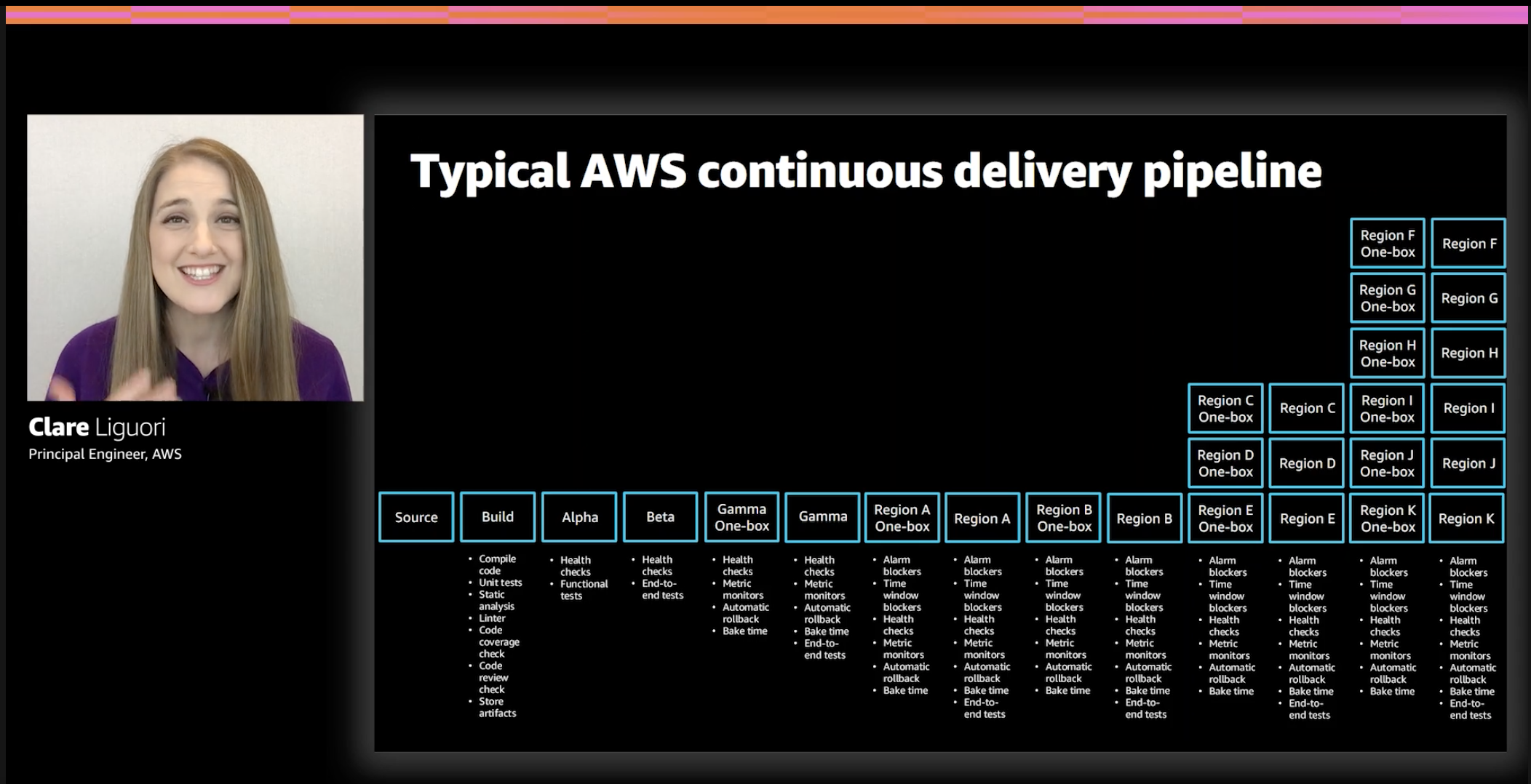Please note that this post, first published over a year ago, may now be out of date.
We’re now into the second week of AWS re:Invent, a conference so huge that it’s sprawled out of December and into next year, with three more days added to the schedule starting January 12th.
I’m going to share some of my talk highlights from last week. Obviously the keynotes have been worth watching, since that’s when we get to hear about most of the new product launches (I’ll be covering that at our re:Invent re:Cap webinar next week, but today we’ll be looking at some of the other sessions.
AWS identity: Next-generation permission management
IAM and permissions in general is one of the areas we see customers struggle with: it’s a pretty complex landscape with lots of stuff to get wrong, potentially with serious consequences.
In this advanced level talk, Brigid Johnson takes a deep dive into how to centrally manage permissions in a scalable way.
Watch “AWS identity: Next-generation permission management”
Hands-off: Automating continuous delivery pipelines at Amazon
You may be interested in how AWS use CI/CD to build, test, and deploy their own services, and I’m always pretty interested in the detail about how the sausage is made.

This intermediate level talk from AWS Principal Engineer Clare Liguori covers their approach, and how it’s improved their teams’ abilities to deliver changes into production.
This session is categorised under the Amazon Builders Library, a set of great resources from Amazon’s engineers, providing detail on how they build and operate their own systems.
Watch “Hands-off: Automating continuous delivery pipelines at Amazon”
The pragmatic cloud developer
Of course, we shouldn’t just uncritically follow the Amazon approach (or the Google, Spotify, Netflix, or other approach for that matter). It pays to be pragmatic.
In this talk (also from the Builders Library series), Colm MacCárthaigh covers making sensible design and operational decisions as you build your own platforms.
I came away with a different perspective on SQL vs NoSQL: Colm’s argument is that traditional SQL engines contain rather too much magic (for example when suddenly the query planner decides to do something new because your table is bigger than it was yesterday), and that NoSQL engines (or, at least, DynamoDB) behaves more predictably, which is beneficial at scale.
Watch “The pragmatic cloud developer”
Deep dive on AWS Nitro Enclaves for applications running on Amazon EC2
AWS Nitro System is the underlying virtualisation platform for EC2, providing high performance networking and I/O as well as solid security for your instances.
In case you haven’t already had enough Colm in your life by this point, this advanced session on AWS Nitro Enclaves provides a good foundational understanding of how Nitro works, and then goes on to describe how the recently-added enclave functionality creates isolated compute environments for protecting highly sensitive data, such as might be required in finance and other regulated industries.
Watch “Deep dive on AWS Nitro Enclaves for applications running on Amazon EC2”
Some more tips
If you’re finding re:Invent difficult to navigate, you’re not the only one: the systems that run the scheduling have always been challenging to use at the in-person conferences, and they’re not much better now everything’s online. Help is at hand from Ken Robbins in the form of Cloud Pegboard. This provides an interface with better search and filter tools than the official guide.
If, like me, you like to watch conference talks at a slightly higher speed than they were recorded, you might also find this Chrome extension from Serverless Hero Jeremy Daly handy. The re:Invent video player doesn’t provide a speed option between 1x and 2x, but this Chrome plugin does.
We’re covering the re:Invent announcements as they happen over on Twitter
We’ve been an AWS SaaS Services Competency Partner since 2020. If you’re building SaaS on AWS, why not book a free health check to find out what the 2023 SaaS SI Partner of the Year can do for you?
This blog is written exclusively by The Scale Factory team. We do not accept external contributions.

